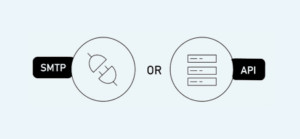When you gather some contacts on a separate list because you DO NOT want to send to them for reasons ranging from bad delivery rates and a decline in your sending reputation, that list is a Suppression List.
What is a suppression list? It is one of the CAN-SPAM Act requirements, dedicated to allowing email senders to remove certain recipients who marked an email as spam or unsubscribed. The list also keeps track of invalid, blocked, or bounced emails.
This guide will discuss all there is to know about the suppression list, how it works in marketing, and why it is crucial to your sending reputation.
What is on a Suspension List?
Unsubscribes
Your suppression list immediately receives the address of any recipient that unsubscribes from your emails, and subsequently inform the email program not to send to the contacts anymore. It is important to note that unsubscribe groups and suppression lists are different. However, they rely on each other to function. When the recipient wants to inform the sender of their disinterest in getting their emails, they click the Unsubscribe Group. Likewise, the sender will use the suppression list to suppress sending to the members of the unsubscribe group.
Without a suppression list, clicking the unsubscribe link is futile. The emails will still go to recipients that have unsubscribed, and if this persists, the receiver will have no choice but to mark these emails as spam.
For best results, ensure that your Unsubscribe Link is clearly displayed so that receivers can easily see and use it. Otherwise, they may be forced to flag it as spam, which is bad for business.
Spam Complaints
Another information the suppression list keeps track of is the addresses that mark your message as spam. If you still send to recipients that have submitted a spam complaint, your sending reputation will be adversely affected. What spam complaints do is to tell the ISPs that you disregard the call of your recipients to stop sending them unsolicited emails. Consequently, the ISP will blacklist your domain or IP address.
Bounced, Blocked, or Invalid Addresses
The suppression list also keeps track of invalid, blocked, and bounced email addresses. Your delivery rates will be harmed if you do not stop sending emails to such addresses. The ISPs will be forced to believe that you are nonchalant towards keeping your contact list sane.
For best results, use a reliable Email Validation API to send emails to valid addresses. Such systems automatically identify problematic addresses, thus keeping your sender reputation and delivery rates safe.
Email Marketing and Suppression Lists
One other excellent thing you can do with suppression lists is controlling the frequency and content you send to certain users. If your content is always valuable and helpful, your recipients will always look forward to them, and this is why marketers find suppression list a viable tool.
Below are some of the ways you can use the suppression list to improve the experience of your recipients:
Product-Specific
Do you send product-related emails? There are recipients who are only interested in emails for certain products they own or like. Set up a preference center that allows them to unsubscribe from product emails they find unrelated to their preferred products. This can be done by using a suppression list created for that particular product type.
Content Type
If you have recipients that fancy weekly newsletters, but do not feel the same way towards your daily deals email, you can create options in your preference center. This will allow such recipients to unsubscribe from the daily deals without missing out on their favored weekly newsletter.
Frequency
It is important to get the frequency of your email campaigns right – it gets overwhelming during the holidays. To avoid this, ask your recipients if they would prefer not to receive holiday emails or cut down on the sending frequency just before the holidays.
Note that this situation will not warrant a complete unsubscribe by recipients. Instead, they will become part of a certain suppression list for the holidays. This way, your email program will exclude them when sending out for this period. Come January; you can resume sending to them.
Conclusion
You can do a lot with suppression lists, but the most important of them all is that you can stop sending to recipients who are not interested in your emails again. Likewise, your recipients can choose to fine-tune content and frequency to suit their preferences. In the end, you keep your sending reputation high and your recipients happy.





